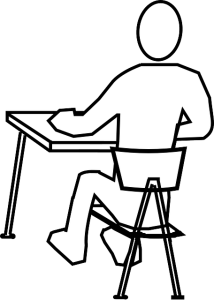-
Mental Health Week
5th - 12th October, 2024
I can see clearly now the rain has gone!
"Exercise could be the most overlooked remedy for depression."
Every morning at 5 am for 27 years, Nelson Mandela jogged in a 3x3 cell for 30 minutes and practised 50 push-ups and 50 sit-ups. He said it helped distance resentment and boosted 'belief'.
Here's what happens when you move at a safe intensity for 30 minutes:
When you start, you'll get a quick shot of cortisol, a stress-related hormone that gives you a healthy dose of adrenaline to motivate your activity.
Then, at the 75% mark of your workout, when your motivation and energy are fading, you'll experience a mini spike in epinephrine - enough to get you through the rest of the way.
Now that you have safely finished your workout, the party begins.
You'll receive a flood of the neurotransmitter endorphin, which will boost your mood and help reduce perceived pain. Endorphins are like a natural opiate. This triggers a lift in dopamine, elevating your feel-good mood further and raising your sense of achievement and satisfaction.
With dopamine in full swing, the superstar hormone serotonin kicks in, bringing happiness and distancing negative thoughts. The combination of these natural biochemicals helps to dissociate challenges, both perceived and real, for this moment in time.
30 minutes later, with a cold glass of water and after a warm shower, life's challenges, whether illusory or actual, don't 'seem' so bad. There's now a sense that everything will be okay and that there is a solution. Oh, it's rare to think "Geez, I wish I hadn't exercised".
I can see clearly now the rain is gone
I can see all obstacles in my way
Gone are the dark clouds that had me blindIt's gonna be a bright (bright)
Bright (bright) sunshiny day
It's gonna be a bright (bright)
Bright (bright) sunshiny dayOh, yes I can make it now the pain is gone
All of the bad feelings have disappeared
Here is that rainbow I've been praying forIt's gonna be a bright (bright)
Bright (bright) sunshiny day
-
Seven Strategies to Lower Blood Glucose
& Curb the Appetite!
My good mate, Doc, was featured in Pampy's Post, March24b - CLICK HERE. The article detailed how Doc and I swapped diets for a day. Doc went back to fast food by 10:30 am, and I ended up in a diabetic coma.
Since appearing as Mr. March in Sydney's Hottest Garbo's calendar 2021, Doc now accepts that he will not make it to the top 12 in 2025. He blames his insatiable appetite and the ever-increasing and tempting menu at the petrol station.
The bottom line is that he, like about 50% of Aussie blokes, struggles to control his "see-food" diet.
Doc is not considering stomach surgery, and he cannot afford GLP-1 medication like Ozempic, which could regulate his appetite and his consumption of all types of food – both the bad and the good. Consuming fewer calories would help him burn unnecessary fat.
So we play the following game.
On Monday, Tuesday & Wednesday (only), he plays Pampy's Super Seven.
The rules are absolute – no wildcards or cheating. Thursday - Sunday he does as he pleases.
The seven lifestyle strategies are primarily designed to lower blood glucose levels, which, like for most Aussie men, sits too high. High blood glucose levels pose a clear health risk.
Pampy's Super Seven.
1) Immediately on rising – 10 body weight squats, 10 push ups, 10 sit ups.
Doc fires up his larger muscles which absorb morning elevated blood glucose. If he does choose to eat unnecessary carbs/sugars his muscles will help to detoxify and lower his blood glucose spike. A quick resistance set will also switch on his postural muscles for the day. Doc knows there is no downside to being stronger.
2) A small glass of water with tiny pinch of bicarb soda.
It's all about hydration. 90% of the time, Doc is thirsty, not hungry. The NaHCO3 (Bicarb) helps the H2O cross cell walls and maintain his optimum hydration status. Proper hydration will help regulate his appetite. Staying hydrated is nearly excuse-free.
3) Eat only good fat & protein before midday (only).
Doc knows that keeping his blood glucose low (below 6 mmol/L) before midday will ignite his fat-burning metabolism and thus lower his appetite for the day. This includes eliminating the late-night ice cream or biscuit snack. His preferred breakfast consists of two boiled eggs, half an avocado, salt, and some cheese.
4) Before consuming any carbohydrates (sugary or starchy), Doc will consume 1 tablespoon of vinegar diluted in a glass of water, making it nearly tasteless.
He can still eat carbs, including sugar, but his (CGM - monitoring) testing proves that his blood glucose spike is up to 40% 'less' with a pre-vinegar hit. The acetic acid slows gastric emptying, reducing the blood glucose spike and hunger.
5) Fibre first, then protein, then carbs.
The order of macronutrients matters. Doc is tired of me pitching dietary fibre and vegetables that contain it. Fibre is the favourite food of the gut biome. When you nourish the gut, you nourish the brain. After his fibre intake, he consumes protein to satisfy his hunger. And finally, he eats his (complex) carbs. He does not mix his protein with carbs, especially sugary foods (including all sauces). Doc continues to tell me this strategy is impractical, but I tell him it reduces the blood glucose spike by up to 30%.
6) Move within 15 minutes of finishing a carby meal.
If Doc chooses to eat carbs he must get up and move straight after. Muscles use sugar. Muscle store sugar. Muscle activity lowers blood glucose. This is good for Doc as he'll not need the same volume of insulin to detoxify his blood glucose. He fires up Metallica tunes and walks for 15 mins post his meal.
7 ) Finish off each day with psyllium husk.
Psyllium husk is fibre central. After complaining to me about the taste, he tells me the husk reduces his appetite – a poor man Ozempic if you like.
-
Attention drivers & desk jockeys!
3 Grease & Oil Actions.

Sitting for long periods does not do our posture any favours.
Sitting hunches shoulders, tightens hip flexors, weakens hamstrings & stiffens the lower back muscles.
If you are currently sitting, get up and practice my 'three' favourite loosening up actions, if you feel they are safe.
-
Not Feeling a Runner's High Anymore?
Consider your magnesium intake!
Over the years, there have been times when I haven't felt the familiar runner's high post-exercise. This typically means I'm either overtraining or, as I've found out, I have low magnesium levels.

Magnesium deficiency occurs when your body does not receive enough magnesium in your diet to function properly. Magnesium is a mineral that is essential for healthy muscles, nerves, bones, and blood sugar levels. While health problems linked to magnesium deficiency are rare, they can occur if you have low levels of magnesium in your body for an extended period. Symptoms of magnesium deficiency include low appetite, nausea, muscle spasms (cramping), and disrupt the normal production of hormones. Magnesium matters.
After experimentation, my go-to is a 10-day cycle of Magnesium Glycinate - CLICK HERE. I dose up just before loose stools.
-
Are Cold Showers Really a Magic Pick Up?

Some health guru once told me that starting my day with a super cold shower would change my life forever.
The FIVE big claims.
1) Reducing mental stress: Colds reduce uric acid, an inflammatory waste product, and increase glutathione to aid in tissue repair.
2) Boost immunity: stimulates the heart rate, which drives fresh oxygenated blood and nutrients to all organs.
3) Muscle recovery: increased circulation and reduced inflammation aid post-exercise recovery. Recover faster, train sooner!
4) Weight loss: There are two types of body fat - brown and white. Cold stimulates brown fat, converting fat calories into heat.
5) Helps with breathing: the cold stimulates a deeper and faster breathing pattern, which helps to increase oxygen uptake and strengthen the diaphragm.
Blah blah, OK, so I tried this for a week. I hated it! Did I feel better? Well, sure. I guess I was perhaps more buzzed throughout the morning. Will I continue? Nuh!

